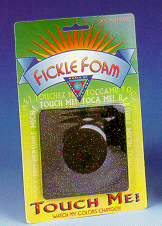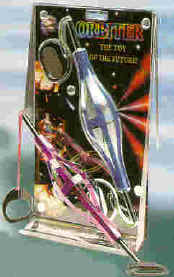BACKGROUND:
Astronomers who study the Universe must often use
indirect evidence to develop a working hypothesis about what they are
observing. For example, how do we know the stars are different temperatures
if we cannot touch them? How do we know what the other planets in the Solar
System are made of if we cannot visit them all? How do we know what elements
are most abundant in space?
Put another way, astronomy is primarily an
observational science rather than an experimental one. Developing hypotheses
plays an important role in this field, more than other sciences. An
astronomer makes a prediction that is later verified or disproved by
observation. However, confirmation often takes a long time. For instance,
black holes were first hypothesized to exist nearly 40 years ago. However,
it wasn’t until recently that black holes were confirmed to exist, through
a combination of observation and subsequent mathematical modeling.
The question of whether other stars have planets
revolving around them has always been speculated, but it was not until
recently that mathematical confirmation in other sectors finally make this
possibility a reality.
speculated, but it was not until
recently that mathematical confirmation in other sectors finally make this
possibility a reality.
In this lab, students learn that indirect evidence can
help test different hypotheses. The students look at several
pieces of indirect evidence and try to see how these models can help
describe or predict what might be out in space. The lab is designed to get
students to think, rather than learn facts about the Universe. Remind the
students to do the exercises slowly and try to observe the finer points of
the experiments.
PROCEDURE:
- The first
exercise asks students to look at fickle foam, a heat sensitive
material. The students should observe that the color of the foam gives
some idea of how hot it is without directly measuring its temperature.
Putting a finger on the pad forms a sequence of colors. The bluish color
reveals the warmest areas and the red the coolest. You can determine the
shape of the object from its outline, and compare its relative
temperature to other objects. Note that cold objects make no record on
the foam, indicating that there are limits to indirect evidence.
-
 The orbiter and the stretchy material exercise is designed to help
students recognize that the speed
of rotation and revolution can distort the shape of an object. As the
orbiter rotates faster, the shape becomes more disk-like, while
remaining in the same plane. When the sticky substance is spun, it
follows an elliptical path. The faster you go, the more eccentric the
orbit becomes.
The orbiter and the stretchy material exercise is designed to help
students recognize that the speed
of rotation and revolution can distort the shape of an object. As the
orbiter rotates faster, the shape becomes more disk-like, while
remaining in the same plane. When the sticky substance is spun, it
follows an elliptical path. The faster you go, the more eccentric the
orbit becomes.
These are examples of motion in the Universe. For example, it is
hypothesized that stars and solar systems form from rapidly spinning
clouds of dust and gas, which flatten out into a disk-like shape. The
shapes of galaxies and planetary systems thus evolve as they move. You
may wish to reinforce these points at the conclusion of the lab.